Your business success depends on what people say about you online. Research shows that 88% of consumers trust online reviews as much as personal recommendations. This means every positive review acts like a trusted friend vouching for your brand.
Think about your own shopping habits. You probably read multiple opinions before buying anything important. Most people read at least 10 reviews before feeling confident about their purchase decision. This behavior shift has transformed how businesses compete in today’s marketplace.
Google now factors review quantity and quality into local search rankings. This makes encouraging customer reviews essential for visibility and growth. The strategies we’ll share go beyond simple requests.
We’ll explore psychology-driven approaches that naturally motivate satisfied clients to share their experiences. These methods create lasting competitive advantages while building genuine social proof that converts browsers into buyers.
Key Takeaways
- 88% of consumers trust online reviews as much as personal recommendations from friends
- People typically read 10+ reviews before making confident purchase decisions
- Google uses review quantity and quality as ranking factors for local search results
- Psychology-based review strategies outperform simple direct requests
- Positive reviews create sustainable competitive advantages in digital markets
- Review encouragement should focus on naturally motivating satisfied clients
Why Customer Reviews Drive Business Success
Customer reviews do more than just give feedback. They can really boost a business’s success. Studies show that businesses with lots of positive reviews see a big jump in sales. They can sell up to 25% more than businesses with fewer reviews.
Reviews act like free ads on trusted sites. When people see real buyers praising a business, they trust it more than ads. This word-of-mouth marketing saves money and builds trust.
Google likes businesses with lots of positive reviews. This helps them show up higher in search results. Businesses that focus on reviews can see their ranking improve in just weeks.
More reviews mean better business performance. Higher-rated businesses get more customers, who leave more reviews. This creates a cycle that boosts visibility and trust.
Reviews also help keep customers longer. By listening to feedback and responding, you show customers you value their opinions. This makes them more likely to come back.
Every authentic review helps build your brand’s trust. New customers check reviews before buying. A good review collection makes your business seem reliable and established.
Reviews also help your business grow over time. A strong online reputation means you can charge more and keep customers longer. This leads to more sales and loyal customers.
We’ve seen businesses change their market position by focusing on reviews. Reviews are not just feedback. They are strategic business assets that bring real results.
Understanding Customer Review Psychology and Behavior
To get more customer reviews, we need to know why people share their opinions. Research shows that 86% of consumers are willing to write a review, but many need the right motivation and simplified process to actually follow through with leaving feedback. This gap between intention and action shows the complex psychological landscape that drives review behavior.
The reciprocity principle is at the heart of customer review psychology. When customers get great value or service, they feel the urge to give back. This creates a chance for businesses to ask for reviews at the perfect time.
Social validation is also key. Customers leave reviews to show they’re credible online. They want to help others make smart choices.
Helping others is a big driver. Many customers share their experiences to help others. This urge grows when they’ve had a strong positive or negative experience.
Timing and emotional state greatly affect review behavior. People are most likely to review when they’re feeling strongly, whether it’s joy or anger. The challenge is to catch these moments and turn them into helpful feedback.
It’s important to know the difference between satisfied and engaged customers. Satisfied customers might be happy but not active, while engaged customers are part of your brand community. Sentiment analysis tools can spot these engaged customers by looking at how they communicate and feel.
Many customers want to review but are stopped by barriers. Things like hard-to-use review systems or long forms can stop them. Modern opinion mining can find these issues by looking at what customers say.
There are several reasons customers don’t leave reviews:
- Time constraints: They feel too busy to write reviews
- Perfectionism: Some want to write the perfect review but never start
- Privacy concerns: They worry about sharing personal info
- Lack of confidence: Some feel they’re not qualified to review
Successful businesses make reviews easy and rewarding. They know that different people have different reasons for leaving reviews. By understanding these, you can ask for reviews in a way that fits each customer’s needs and removes barriers to feedback.
1. Design a Seamless Post-Purchase Review Request System
Creating a system for asking for reviews can turn random feedback into valuable insights. Businesses with a structured system get 3x more customer reviews than those without. Success comes from setting up an automated system that catches customers when they’re most happy.
Understanding your customer’s journey is key. Map every point where they interact with your brand. This helps you know the best time to ask for feedback without bothering them too much.
Today’s review systems use smart timing and personalized messages. They automatically send requests based on customer data. This approach makes review collection easier and keeps it personal.
“The best review request systems feel invisible to customers but deliver visible results to businesses.”
Optimal Timing for Review Requests
When you ask for reviews matters a lot. Send your first request 2-5 days after delivery or service end. This captures their experience when it’s fresh in their mind.
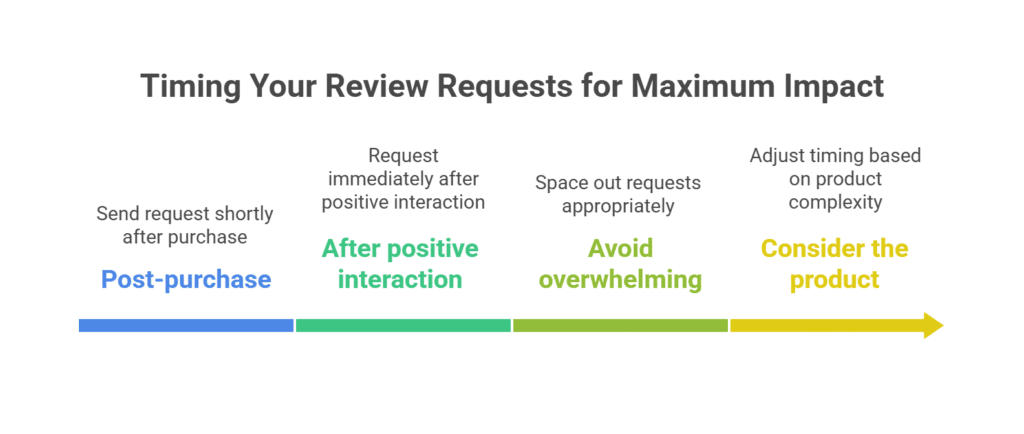
Different products need different timing. Digital products work best with immediate requests. Physical products need time to show their value. Service businesses should wait until the project is done and the customer has time to reflect.
Text classification technology finds the best timing for each customer. It looks at their purchase history, product type, and behavior. This approach can increase response rates by up to 40%.
Here are some timing guidelines for different industries:
- E-commerce: 3-7 days after delivery confirmation
- Software/Apps: 1-3 days after first use
- Professional services: 1-2 weeks after project end
- Restaurants: Same day or next day after visit
Automated Email Sequences That Convert
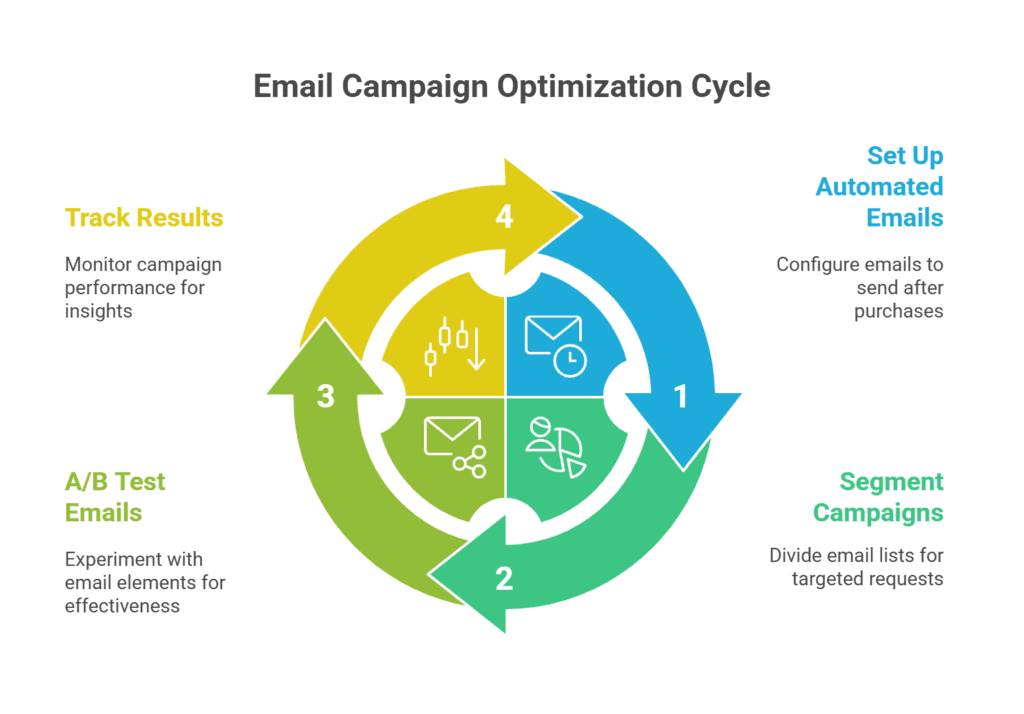
Good follow-up emails for reviews need careful crafting and a strategic order. Your first email should feel like a natural part of the customer relationship. Avoid generic emails that seem like spam.
Start with a thank you message for their recent purchase. Then, smoothly ask for a review. Keep your tone friendly and explain why their feedback is important. Customers are more likely to respond when they see the impact of their reviews.
Create a three-email sequence with increasing urgency:
- Initial request: Friendly, appreciative tone focusing on their experience
- Second follow-up: Emphasize community benefit and social proof
- Final reminder: Create gentle urgency with time-sensitive language
Personalization boosts conversion rates a lot. Use the customer’s name, reference their specific purchase, and mention relevant details. Automated systems can get this info from your customer database.
Test different subject lines, send times, and email formats. A/B testing shows what works best for your audience. Track open rates, click-through rates, and actual reviews to keep improving your sequences.
2. Offer Strategic Incentives Without Compromising Authenticity
Smart businesses use reward systems to get honest customer feedback. They aim to motivate people to share their thoughts without seeming to pay for good reviews. When done right, these programs can increase reviews and follow platform rules.
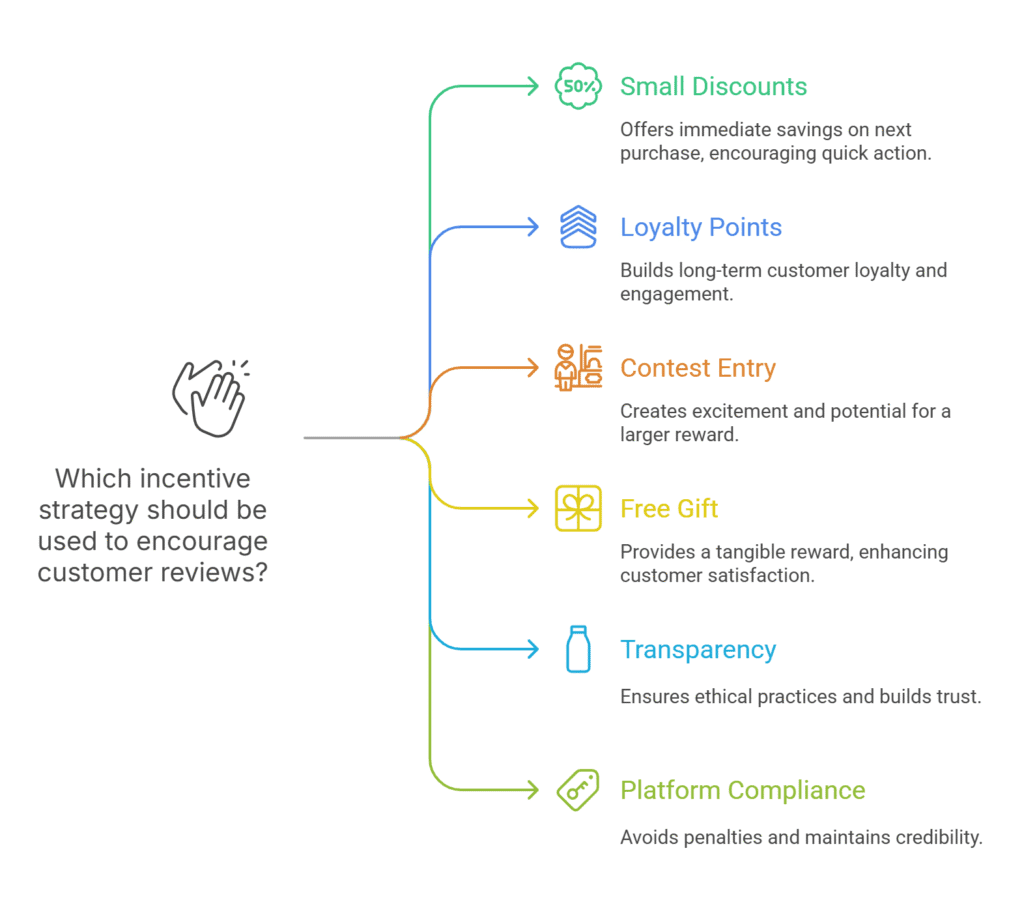
We suggest focusing on long-term value over quick rewards. This way, you get real feedback and build strong customer ties. It’s important to be open about your rewards and make sure they don’t sway reviews.
“The most effective review incentives reward participation, not positivity. When customers feel valued for their honest opinions, they’re more likely to share authentic experiences.”
Discount Codes and Loyalty Point Rewards
Discount codes are a top choice for product feedback incentives. But, how you offer them is key. Give future discounts for sharing feedback, not just for good ratings.
Loyalty points are great because they keep customers coming back. They earn points for reviews, which they can use later. This method encourages real feedback and builds loyalty.
Here are some effective discount and loyalty strategies:
- Offer 5-10% discounts on future purchases after review submission
- Award loyalty points equal to 1-2% of purchase value for each review
- Provide tiered rewards based on review frequency, not quality
- Create seasonal bonus point campaigns to boost participation
Contest Entries and Exclusive Member Benefits
Contests add excitement to reviews without paying everyone. Monthly drawings for prizes like gift cards or products create interest. The random nature helps keep reviews honest.
Exclusive member benefits are also powerful. Create a VIP program where reviews unlock special perks. These perks reward engagement without hurting customer feedback quality.
Effective contest and membership strategies include:
- Monthly prize drawings for all review contributors
- Exclusive access to new products for active reviewers
- VIP customer service lines for frequent feedback providers
- Special member-only events and webinars
- Early bird notifications for sales and promotions
Always say that rewards are for participating, not just for positive reviews. This honesty builds trust and keeps your feedback real and compliant.
3. Leverage Social Media Platforms for Review Generation
Social media makes it easy for customers to share their experiences and leave reviews. It’s a place where you can connect with people and get real feedback.
Social networks give you unique opportunities to engage with customers. You can create fun content that encourages people to leave reviews.
We’ll look at strategies to turn your social media into a review-generating machine. These methods are fun for your customers and feel natural.
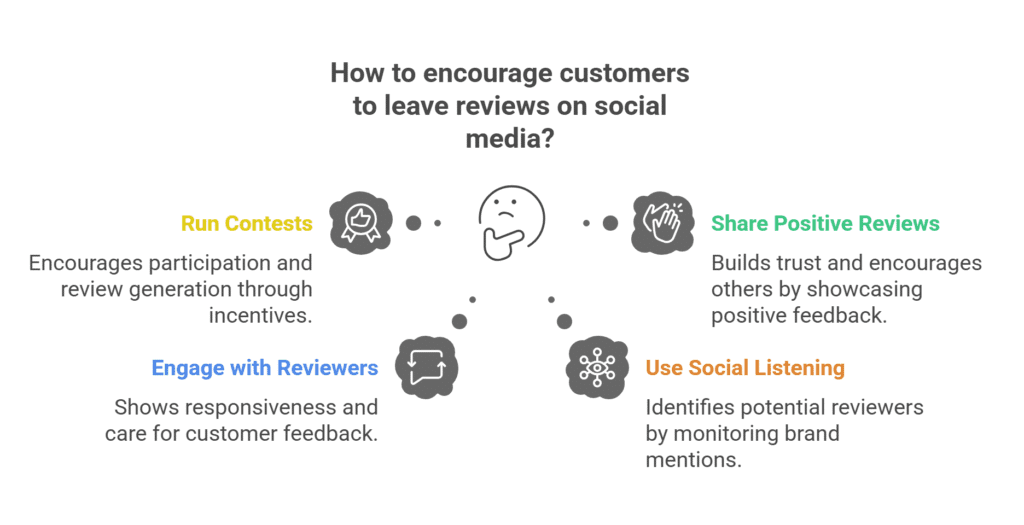
Instagram Stories and Interactive Polls
Instagram Stories have tools to get customer feedback. Polls, question stickers, and swipe-up links make it easy for followers to leave reviews.
Start by showing your products in action in Stories. Use question stickers to ask followers about their experiences. This can lead to more reviews from happy customers.
Poll stickers are great for checking customer satisfaction. Ask simple questions like “Would you recommend us to a friend?” and link to your review platform.
Share behind-the-scenes content to make your brand more relatable. When customers feel connected, they’re more likely to leave reviews.
Facebook Community Engagement Tactics
Facebook groups are perfect for building customer relationships and getting reviews. Build communities where customers share their experiences and recommend your products.
Create special Facebook groups for your customers. They can share photos, ask questions, and connect with others. This builds trust and encourages reviews.
Host live sessions to answer questions and show off new products. These sessions strengthen relationships and encourage feedback.
Feature customer success stories in your Facebook posts. Positive stories inspire others to share their experiences and leave reviews.
Engage with customers who leave positive feedback on Facebook. Respond promptly and personally to build stronger relationships and encourage more reviews.
4. Implement QR Codes for Instant Review Access
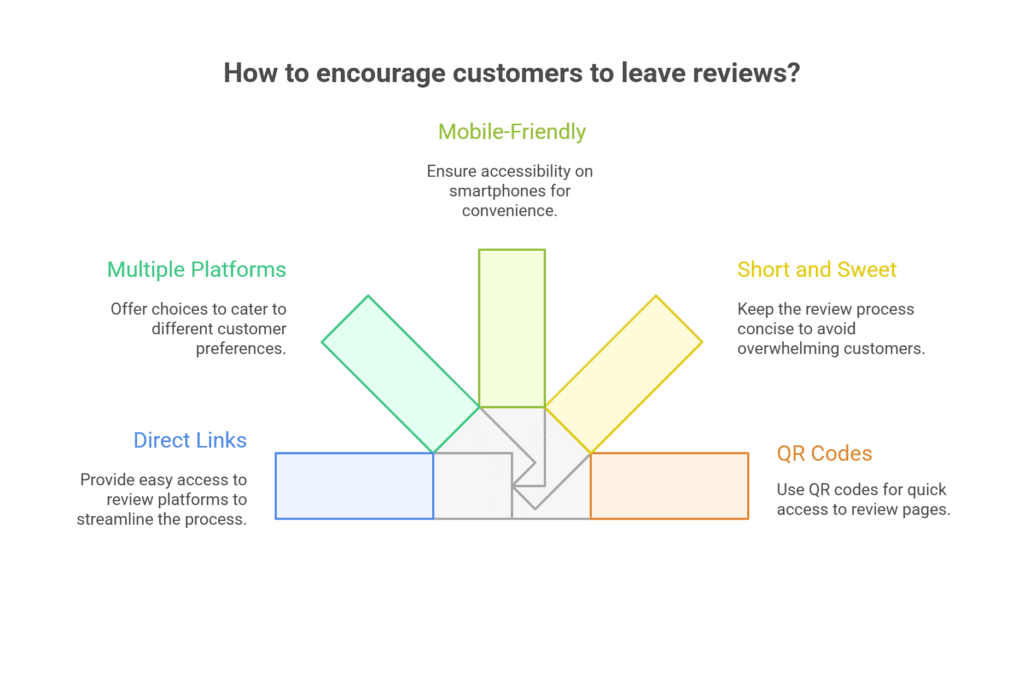
QR codes bridge the gap between offline and online reviews. They make it easy for happy customers to share their experiences online.
QR codes give customers quick access to review platforms. This makes it simple to leave feedback without searching for your business.
Modern customers expect convenience. QR codes provide it. This leads to more positive reviews.
“QR codes have revolutionized how we connect with customers post-purchase. The instant access they provide has tripled our review generation rate.”
Strategic QR Code Placement Techniques
Where you place QR codes is key to success. Location matters more than design for customer engagement.
Here are some top spots for QR codes:
- Receipt bottoms with clear call-to-action text
- Product packaging near opening instructions
- Table tents in restaurants and cafes
- Business cards and marketing materials
- Email signatures and digital communications
In-store placement is vital for retail. Place QR codes near checkout for easy scanning.
Service-based businesses should use QR codes in follow-up materials. This is when customers are most likely to leave reviews.
Size and visibility requirements vary. Make sure QR codes are scannable from a distance. Test them on different phones and in various lighting.
Mobile-Optimized Review Landing Pages
Your QR code’s success depends on the landing page. Make sure it loads fast and is easy to use.
Offer multiple review platforms. This lets customers choose where to leave feedback. It’s good for your online reputation.
Include these on your landing pages:
- Fast loading times under three seconds
- Clear platform selection buttons
- Pre-filled business information when possible
- Simple navigation without distracting elements
- Mobile-responsive design for all screen sizes
Review summarization becomes more effective with tracking. Use unique URLs for each QR code location.
Use progressive disclosure on your landing pages. Start with platform selection, then guide users through the review process.
Design your landing pages for various environments. They should work well in both bright sunlight and dim indoor lighting.
5. Personalize Your Customer Review Requests
Personalization makes review requests stand out by speaking directly to each customer’s unique experience. Messages that reflect individual preferences and purchase history create meaningful connections. Personalized review requests achieve up to 50% better performance than generic approaches, making this strategy essential for maximizing your review generation efforts.
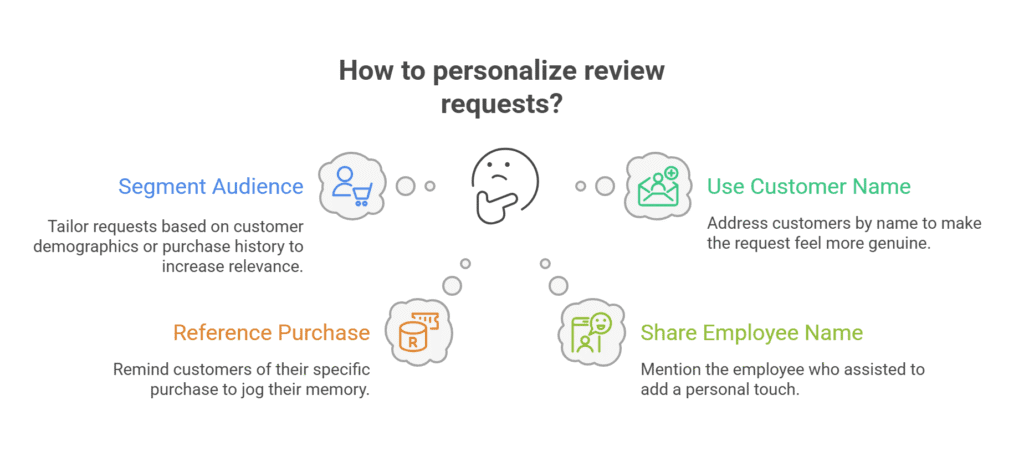
Every customer interaction is valuable. You can use this data to craft targeted messages that feel relevant and timely. Modern businesses use sophisticated segmentation and dynamic content to deliver the right message at the right time.
Advanced personalization goes beyond just using a customer’s name in emails. It involves analyzing their behavior, purchase frequency, and engagement levels. Aspect-based sentiment analysis helps understand which product features matter most to different customers, allowing for tailored review requests.
Customer Segmentation and Targeting
Effective segmentation starts with identifying meaningful customer groups. Consider factors like purchase value, buying frequency, product categories, and engagement history when creating segments.
High-value customers respond well to exclusive messaging that acknowledges their loyalty. These customers often appreciate being treated as VIPs and may be more willing to share detailed customer reviews when approached respectfully.
New customers need different messaging that focuses on their recent experience. First-time buyers often need more guidance and reassurance about the review process.
- Segment by purchase history and product preferences
- Consider customer lifecycle stage and engagement level
- Use demographic and behavioral data for targeting
- Create specific messaging for each customer group
Dynamic Email Template Customization
Dynamic templates adjust content based on customer data, creating unique experiences without manual effort. You can customize product images, messaging tone, and even review platform recommendations based on individual preferences.
Smart templates pull information from your customer database to reference specific purchases, delivery dates, and previous interactions. This level of detail makes your review requests feel personal.
The technology behind dynamic customization includes merge tags, conditional content blocks, and automated triggers based on customer actions. These tools enable you to scale personalization efforts while maintaining the human touch that customers value.
Consider implementing progressive profiling to gather additional customer insights over time. Each interaction provides opportunities to refine your personalization strategy and improve future customer reviews campaigns.
6. Create Engaging Video Review Campaigns
Video testimonials create real connections that text reviews can’t match. They get more people involved than written feedback. This makes them a top choice for sharing customer experiences.
Seeing real people talk about your products builds trust and emotional bonds. This visual storytelling turns online reviews into stories that grab attention.
Video campaigns add a personal touch to your review strategy. They show real emotions and reactions that text can’t capture.
Video Testimonial Request Strategies
Good video testimonial campaigns start with simple, clear requests. Make it easy for customers to participate by giving them guidelines on video length and content.
Provide a brief template or talking points for customers. Ask questions like “What problem did our product solve for you?” and “How has your experience exceeded expectations?”.
Send video requests 2-3 weeks after purchase. This gives customers time to experience your product. Follow up with reminders and offer technical help to help them.
“Video testimonials are 12 times more likely to be shared than text and image content combined, making them invaluable for organic reach and credibility.”
Offer different ways for customers to submit videos. Some might prefer recording on their phones, while others might like video calls or in-store recordings.
User-Generated Content Initiatives
User-generated content campaigns turn happy customers into brand advocates. Start video contests that let customers show off your products in their own way.
Use branded hashtags and challenges to make it fun and shareable. Ask customers to show unique product uses or share transformation stories in short videos.
Share behind-the-scenes content to get customers involved in your brand story. Show how products are made, introduce team members, or share company culture moments.
Use user-generated content across different marketing channels. Put customer videos on your website, social media, emails, and ads.
Make sure customers know what to expect and what rights they have. Give them branded graphics, music, or editing tools to keep quality high while staying true to authenticity.
Keep an eye on how well your video campaigns work. Video online reviews often get more clicks and keep people engaged longer than text reviews.
7. Use Gamification to Boost Review Participation
Make your customer experience better by turning review requests into fun games. Gamification can boost customer engagement by up to 90%. It makes asking for reviews more fun than a chore.
Adding game-like features to your review generation strategy taps into people’s love for achievement. Customers start to enjoy participating instead of just going through the motions. This is because it meets their basic needs for progress, competition, and recognition.
The trick is to make it rewarding without feeling forced. Your gamification should make the review process better, not worse. We’ll guide you on how to do this well.
Badge Systems and Achievement Milestones
Digital badges give instant rewards for completing review tasks. Create a badge system that rewards different levels of effort. Start with simple badges like “First Reviewer” and move up to “Trusted Reviewer” for more reviews.
Set up achievement milestones that customers can aim for. For example, reviewing five different product categories or writing detailed reviews over 100 words. Each milestone should unlock new rewards.
Make your badges look good and shareable on social media. Customers love showing off their achievements, which helps your brand. Try seasonal or limited-time badges to keep things fresh and exciting.
Pro tip: Link badge achievements to real benefits like early sales access or exclusive product previews. This adds value beyond just feeling good.
Community Leaderboards and Recognition Programs
Leaderboards tap into competition while building community. Create monthly or quarterly leaderboards to show off your top reviewers. Use metrics like total reviews, helpfulness votes, or community scores.
Offer different leaderboard categories for different types of customers. Some might excel at detailed reviews, while others are great at answering questions. This approach encourages more people to participate.
Recognition goes beyond digital displays. Feature top reviewers in newsletters, social media, or even product packaging. Personal recognition builds emotional connections that foster loyalty and continued participation.
Consider giving “Reviewer of the Month” benefits like:
- Free product samples or early access to new releases
- Personal consultation calls with product experts
- Special discount codes for friends and family
- Invitation to exclusive virtual events or webinars
Keep an eye on engagement metrics to improve your gamification. See which badges and leaderboard features work best. Adjust your systems based on what customers actually do, not just what you think they’ll do.
Remember, good gamification feels natural and fun, not forced or too much. Start simple and add more as your community grows and engages.
8. Partner with Influencers and Brand Ambassadors
Working with influencers can really boost your review numbers. They bring in trusted voices your audience already follows. This makes your online reputation management more like a real conversation, leading to more reviews.
Studies show businesses can get up to 300% more reviews with the right partners. It’s all about finding people who share your values and have an audience that loves your brand. These partnerships keep bringing in customer feedback even after the initial excitement fades.
Micro-Influencer Collaboration Strategies
Micro-influencers often get better results than big influencers because their followers trust them more. They have 1,000 to 100,000 followers who really engage with their content. This makes their recommendations feel more personal, encouraging real reviews.
Start by finding micro-influencers in your niche who use similar products. Look for creators with engagement rates over 3-5% and a demographic that matches your target customers. Send them personalized messages that show you get their content and audience.
Make your partnerships about real experiences, not scripted posts. Give influencers your product and ask for their honest thoughts. Include review links in their posts, but don’t ask for specific ratings. This keeps things real while encouraging their followers to share their own stories.
- Research engagement rates and audience demographics before reaching out
- Offer products for genuine testing instead of payment for reviews
- Provide easy-to-use review links and clear instructions
- Track performance with unique promo codes or landing pages
Customer Ambassador Program Development
Your happiest customers can become your biggest advocates with the right approach. Customer ambassador programs give them a formal role, recognition, and rewards. This leads to a steady flow of real reviews from people who love your brand.
Start by finding customers who already support your brand online or through feedback. Look for those who often recommend you or share your content naturally. These are the people who can help build a strong ambassador program.
Design your program with clear goals and meaningful rewards. Ambassadors might get early access to new products, discounts, or social media shoutouts. The goal is to make them feel valued and part of something special, not just another transaction.
Make it easy for ambassadors to encourage reviews from their friends. Give them shareable content, review templates, and tracking links. Keep in touch with them to keep them excited about sharing their experiences with your business.
- Identify enthusiastic customers through social media
- Develop tiered reward systems based on participation
- Provide ambassadors with easy-to-share review tools
- Track ambassador performance and adjust programs
- Celebrate ambassador achievements publicly to keep them engaged
Remember, successful partnerships need ongoing care. Regular check-ins, feedback, and updates keep your networks active and effective. This investment in building relationships pays off with consistent, genuine reviews that boost your online reputation.
9. Set Up In-Store Digital Review Stations
In-store digital review stations turn your store into a feedback hotspot. They catch customer feelings when they’re most positive and memories are fresh.
These stations are a creative way to get reviews. They ask for feedback right away, when emotions are high and details are clear.
Make the review process easy and quick. When customers find digital solutions easy to use, they’re more likely to share their thoughts without hassle.
Interactive Kiosks and Tablet Solutions
Interactive kiosks have simple, yet advanced interfaces. They guide customers through reviews step by step. These stations work great in busy areas where people pause.
Tablets are flexible and cost-effective for small businesses. You can place them on counters, walls, or move them around as needed.
Essential features for effective digital stations include:
- Large, clear touchscreens for all finger sizes
- Simple steps to complete the review
- Options to post on Google, Yelp, and Facebook
- Visual ratings with stars or emojis
- Space for detailed product feedback
Place these stations near checkout, waiting areas, or customer service. Aim for when customers have a few minutes and are happy with their visit.
Staff-Assisted Review Collection Methods
Training staff to collect reviews adds a personal touch. They can suggest feedback at the right time and guide customers.
Your team becomes review ambassadors. They know how to naturally ask for feedback, making it feel helpful, not pushy.
Effective staff-assisted techniques include:
- Spotting positive reactions and acting fast
- Helping customers with review platforms on their phones
- Demonstrating how to use the review station
- Following up on great service with review requests
- Telling customers how feedback helps improve
Train your team to read customer cues. Timing and tone matter more than perfect scripts for real reviews.
Combining digital ease with human touch makes the best review system. Customers like having choices that fit their tech comfort and personal style.
10. Follow Up After Exceptional Customer Service
Exceptional service recovery turns unhappy customers into your biggest fans. When your team fixes problems and goes beyond what’s expected, you create emotional high points. These moments are key to getting positive reviews.
Studies show that customers who get great service become more loyal than those who never had issues. This is because solving problems together strengthens your bond with customers.
It’s important to spot these special moments and act on them wisely. Your team needs training to know when a customer is truly grateful.
Timing Your Post-Resolution Review Requests
Timing is everything when asking for reviews. The best time is 24 to 48 hours after fixing a problem. This is when customers are most likely to be happy and satisfied.
Asking too soon can seem pushy. Waiting too long lets the moment pass and other things take priority.
Here are some tips for timing:
- Send a first follow-up within 24 hours to check if they’re happy
- Ask for a review in your second follow-up, 48-72 hours later
- Use tools to see how customers feel before asking for reviews
- Keep track of how people respond to find the best time for your industry
Your customer service platform should automatically send follow-ups based on how happy customers are. This saves your team from too much work.
Converting Difficult Situations into Positive Reviews
The best reviews often come from customers who faced problems. These reviews show you really care about making things right.
Teach your team to ask for reviews naturally during problem-solving. Say things like “We really want to make this right for you” and “Your feedback helps us serve customers better.”
Keep track of when your team goes the extra mile in your CRM. This way, you can send targeted review requests. Customers remember when someone really helped them and often mention that person in reviews.
Make templates that acknowledge the problem but focus on the solution. Your message might say: “We know your recent experience didn’t start as planned, but we hope our resolution exceeded your expectations.”
Use tools to find customers who are really happy with your service. These customers are more likely to leave reviews and give helpful feedback.
11. Build Exclusive Customer Review Communities
Creating special customer review groups turns regular buyers into brand fans. They love to share their stories. This makes them feel part of something special.
These groups tap into what people love: feeling special. By making online reviews exclusive, you keep customers close and involved.
It’s all about real value. Your community should offer something unique. It can’t be just empty promises.
VIP Customer Review Groups
VIP groups are the best way to keep customers engaged. They bring together your most loyal fans who always give great feedback. These members get special treatment that shows they’re valued.
Find your top reviewers from your data. Look for those who write detailed, helpful reviews and interact well with your brand. They become your VIP members.
Give your VIPs perks that matter. Consider:
- Private access to new products
- Direct chats with company leaders
- Special discounts and codes
- Invites to exclusive events and webinars
- Recognition badges on their profiles
Use aspect-based sentiment analysis to see what your VIPs value most. This helps you focus on what they love about your products.
Keep in touch with your VIP group. Send them updates on new products, company news, and special offers. Make them feel like they’re part of something big.
Early Access Product Testing Programs
Early access programs excite your most loyal customers. They get to try new products before anyone else. In return, they give you feedback and online reviews to help improve your products.
Make sure your early access program is clear. Tell participants they’ll get products for honest reviews. Set deadlines for feedback to keep things moving.
Pick your early access participants wisely. Look for those who have given thoughtful reviews in the past. Quality is more important than quantity.
Have different levels in your early access program. Some get products weeks early, others just days. This keeps things exclusive while letting more people join.
Use aspect-based sentiment analysis to check feedback from your early access program. This helps you see what people like and dislike before you launch.
Watch how well your exclusive groups do. Look at engagement and review rates. Exclusive groups often create 3-5 times more reviews than regular customers. This is a great way to get ongoing feedback and build trust.
Mastering Follow-Up Emails for Customer Reviews
Mastering follow up emails for reviews needs the right timing and messages that speak to your customers. Email is a key tool for getting reviews, but it’s all about how you use it. Success comes from the details that make your campaigns stand out.
Understanding what your customers do is key. Studies show that emails with personalized subject lines do 26% better than generic ones. This shows why you can’t just send the same email to everyone.
Today’s email tools use text classification to learn what customers like. They find out who responds best and send emails that way.
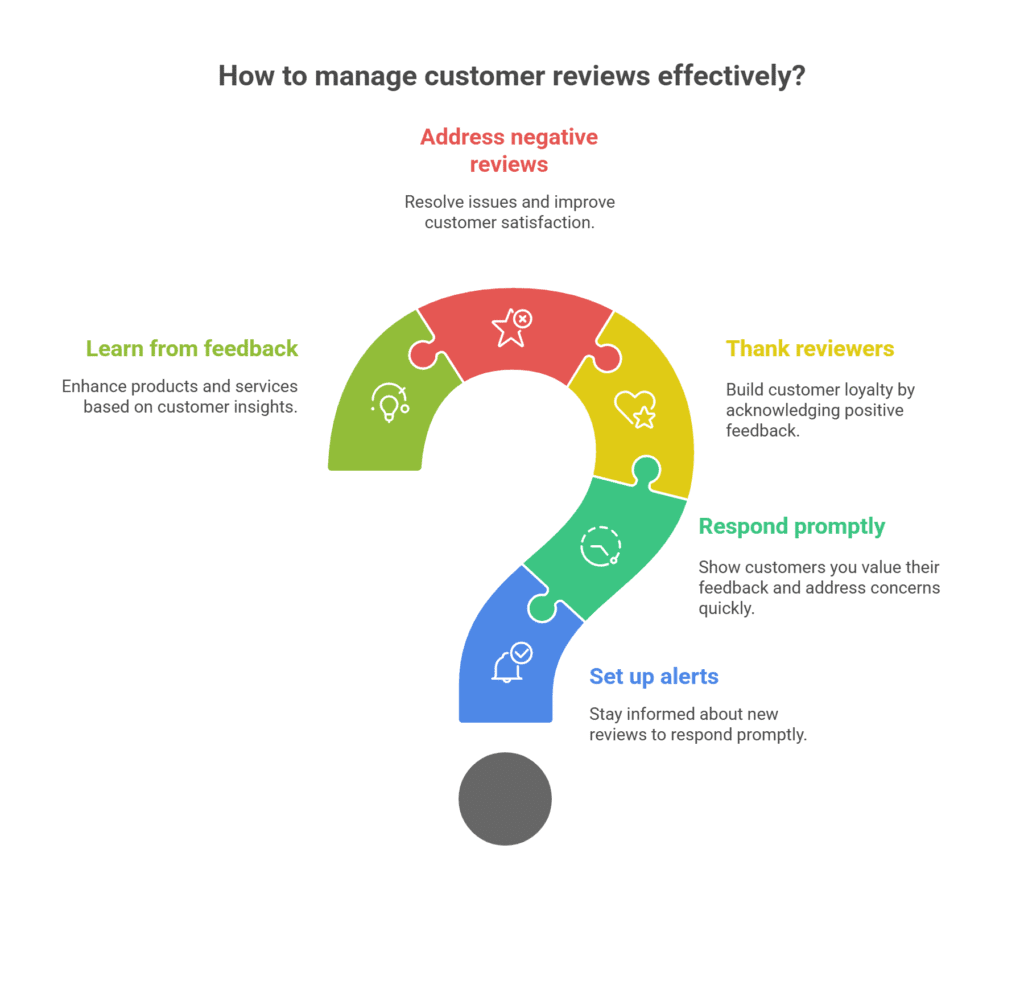
Crafting Irresistible Subject Lines
Your subject line is what gets your email opened or deleted. Personalization is more than just using the customer’s name.
Good subject lines spark curiosity and show value. Here are some tips:
- Ask about specific products: “How was your experience with [Product Name]?”
- Make it urgent: “Your feedback expires in 48 hours”
- Offer something in return: “Share your thoughts and save 15% on your next order”
- Tap into emotions: “Help other customers like yourself”
Try different subject lines to see what works best. Change one thing at a time to find out what gets more opens.
Stay away from spam words like “free” and too much punctuation. These can send your emails to spam.
Optimal Send Times and Email Frequency
When you send your emails matters a lot. The best time varies by industry and who your customers are.
For most, Tuesdays to Thursdays between 10 AM and 2 PM work best. But, B2B emails do better in the morning, and retail emails do well in the evening.
How often you email is also important. Too little and you miss chances, too much and you annoy people. A good plan is:
- First email 3-7 days after they buy
- Reminder 7-10 days later
- Last try with a special offer after 2 weeks
Tools that use text classification can adjust when to send emails based on who opens them. They look at when customers usually check their emails.
Keep an eye on how well your emails do. Look at open rates, clicks, and who unsubscribes. If someone doesn’t respond after three tries, stop emailing them.
Use what customers do to decide when to email them. Send emails when they visit your site, like your social media, or contact you with good feedback.
Advanced Online Reputation Management Strategies
Your online reputation is key before customers even meet you. Effective online reputation management is more than just collecting reviews. It’s about monitoring, responding to, and using every customer feedback online.
Studies show that businesses that reply to reviews get 12% more reviews than those that don’t. Also, 97% of people read how businesses respond to reviews. This makes your response strategy very important for getting more reviews.
We’ll show you how to set up systems to watch feedback on Google, Facebook, Yelp, and more. You’ll learn how to turn every review into a chance to show great customer service. This will also encourage more people to share their experiences.
Multi-Platform Review Monitoring
Good reputation management starts with watching feedback everywhere. You need systems that track mentions and reviews on many platforms at once. This way, no feedback is missed.
Key monitoring platforms are:
- Google My Business and Google Maps reviews
- Facebook business page comments and reviews
- Yelp and industry-specific review sites
- Social media mentions on Twitter, Instagram, and LinkedIn
- E-commerce sites like Amazon, Etsy, or special marketplaces
Modern opinion mining tools can analyze feelings on these platforms. They give insights into how happy customers are. Set up alerts to tell you right away when new reviews come in. This lets you respond quickly, showing customers you care about their feedback.
Think about using dashboards that put all reviews in one place. This makes it easier to manage and ensures you respond well on all platforms.
Professional Response Strategies for All Reviews
Every review is a chance to show you care about your customers. Your response should be professional, whether it’s positive or negative. It should also encourage others to leave reviews.
For positive reviews, do the following:
- Thank customers by name when you can
- Highlight specific details they mentioned
- Invite them to share their experience with others
- Mention related products or services they might like
For negative reviews, follow these steps:
- Address their concerns quickly and professionally
- Apologize sincerely without making excuses
- Offer clear solutions or next steps
- Move detailed talks to private channels when needed
- Follow up to make sure the issue is fixed and ask for updated feedback
Your responses do two things: they talk to the reviewer and show others how you handle feedback. Professional, thoughtful responses can turn negative experiences into positives. They show you’re committed to making customers happy.
Make response templates for common issues, but always make them personal. This keeps things real and caring. It encourages more people to leave reviews.
Measuring ROI and Success Metrics
Effective review program management relies on strong measurement frameworks. These frameworks link customer reviews to business results. Without tracking, you can’t tell which strategies work and which waste resources.
Businesses that track review metrics well see 23% better performance in generating reviews. This is because they can spot and scale successful tactics.
It’s important to have a detailed measurement system. This system should go beyond just counting reviews. It should tie review data to real business outcomes like more sales, better search rankings, and lower customer costs.
Key Performance Indicators for Review Programs
The best review programs focus on specific metrics that help businesses grow. Start by tracking key KPIs that give you insights into your program’s success.
Review volume and velocity are key indicators of your program’s health. Track how many reviews you get weekly and monthly. Also, watch how these numbers change over time. This helps you see patterns and how well your campaigns work.
Response rate metrics show how well your outreach connects with customers. Find out what percentage of customers review after you ask. The usual range is 5-15%, depending on your industry and method.
Quality matters as much as quantity. Look at your average star ratings, sentiment scores, and the mix of detailed and brief reviews. Customer reviews with more content are more valuable for SEO and sales.
Analytics Platforms and Tracking Solutions
Today’s review summarization tools and analytics platforms turn raw data into useful business insights. They help you spot trends, find opportunities, and measure ROI across different channels.
Google Analytics integration lets you see how reviews affect website traffic and sales. Set up goals to track the customer journey from finding reviews to making a purchase. This shows how your review efforts boost revenue.
Specialized review management platforms offer advanced features like sentiment analysis and competitor benchmarking. They’re great at review summarization and provide easy-to-understand dashboards.
Make custom reports that match your business goals. Weekly summaries should focus on review numbers, rating trends, and response rates. Monthly reports can dive deeper into ROI, showing how review improvements lead to more sales and customers.
Common Pitfalls in Customer Review Requests
Businesses often get too excited about collecting reviews. This can lead to legal and ethical problems. What starts as a good idea can quickly turn into serious issues that harm your business.
Many companies don’t know they’re breaking rules when they ask for reviews. These mistakes can lead to penalties, removed reviews, or even account suspensions. It’s important to understand these pitfalls to avoid costly problems.
Businesses often make the same mistakes over and over. They offer the wrong incentives, use aggressive tactics, or ignore rules. These mistakes can ruin all the hard work done to build a good reputation in just a few days.
Legal and Ethical Review Guidelines
The Federal Trade Commission (FTC) has clear rules about collecting customer feedback. These rules help keep reviews honest and trustworthy.
Material connections between businesses and reviewers must be clear. This includes any payment, free products, or special deals that might influence a review. The disclosure must be easy to see, not hidden.
Here are the key FTC requirements you must follow:
- Clearly disclose any incentives or compensation offered for reviews
- Ensure reviewers understand they must provide honest opinions
- Never pay for fake or misleading reviews
- Avoid pressuring customers to change negative reviews
- Maintain records of your review solicitation practices
Ethical violations are more than just legal issues. Trying to manipulate review systems hurts trust and damages the whole review system. Authentic product feedback is better for everyone.
Some businesses try to cheat by creating fake accounts or buying reviews. These actions are not only wrong but also easily caught by algorithms. The consequences include permanent bans and legal trouble.
Platform-Specific Compliance Requirements
Each review platform has its own rules for businesses. Google, Facebook, Yelp, and Amazon all have different guidelines you must follow.
Google My Business doesn’t allow automated review systems or incentives. They also don’t want businesses to only ask happy customers for reviews.
Facebook lets businesses ask for reviews but doesn’t allow fake accounts or paid feedback. Their algorithms can spot suspicious patterns and penalize violators.
Yelp is very strict about review manipulation. They use advanced filters to find fake reviews and remove them. Businesses that break Yelp’s rules might get alerts on their profiles.
Amazon has strict rules about customer feedback for products. Sellers can’t offer payment for reviews, contact customers directly, or use third-party services to get reviews.
Common platform violations include:
- Asking friends and family to write reviews
- Offering discounts in exchange for positive reviews
- Creating multiple accounts to leave fake reviews
- Pressuring customers to remove negative feedback
- Using automated tools to solicit reviews
Platform algorithms are getting better at catching these violations. What used to work now can lead to penalties and restrictions.
The best way is to build real relationships with customers. Provide great service, follow up well, and make it easy for happy customers to share their experiences naturally.
Remember, real reviews come from genuine experiences, not tricks or shortcuts. Building a strong reputation takes time but is worth it for your business and customers.
Conclusion
Using creative ways to get reviews changes how your business views customer feedback. Companies that use many review strategies get 67% more reviews than those that don’t. This shows that using different methods really works.
Begin with strategies that fit your current workflow. Email and social media are quick wins for most. QR codes and in-store stations are great for retail. Video and games are best for younger audiences.
Real reviews come from happy customers. First, focus on great service. Then, make it easy for them to share their good experiences. Your requests should feel natural, not forced.
Try different methods and see what works best. Watch which platforms give you the most valuable reviews. Some like Google, others prefer industry sites or social media.
Make getting reviews a part of your customer service plan. Train your team to spot review chances. Set up systems to ask for reviews at the right times.
Your reputation grows with each review. Start using these strategies now. See your online reputation grow with real customer feedback.
FAQ
How long should I wait after a purchase before requesting a customer review?
Waiting time depends on the type of product or service. For digital items, wait 24-48 hours after delivery. For physical goods, give customers 7-14 days for simple items and 2-4 weeks for complex ones. This lets them experience the product and remember their satisfaction.
Are incentivized reviews allowed on major platforms like Google and Amazon?
Google doesn’t allow incentives for reviews. Amazon lets them for Vine program members. Yelp and Facebook have different rules. Always check the latest guidelines before using incentives. Offer value through loyalty or exclusive access instead of direct payment.
What’s the best way to respond to negative customer reviews?
Be professional and quick, responding within 24 hours. Acknowledge their experience, apologize, and offer to fix the problem privately. Avoid being defensive. Use phrases like “We appreciate your feedback” and “We’d love to make it right.” Take the issue offline, then update publicly once solved.
How can I encourage customers to leave reviews without being pushy?
First, focus on great customer service. Then, ask for reviews in a natural way. Use personalized messages and explain how feedback helps others. Offer multiple platforms and make it easy with direct links. Always thank them for their time and input.
What are the most effective subject lines for review request emails?
Use personal, specific, and benefit-focused subject lines. Examples include “How was your experience with [Product Name]?” or “Help other customers discover [Product Name].” Avoid “Leave a Review” and focus on their experience or feedback value. Test different subject lines to see what works best.
How do QR codes improve the customer review process?
QR codes make it easy to access review platforms without typing URLs. They’re great for physical businesses and product packaging. Place QR codes on receipts or inserts to link to your preferred platform. Make sure the landing page is mobile-friendly and easy to use.
What’s the difference between customer segmentation and personalization for review requests?
Segmentation groups customers by shared traits like purchase history. Personalization customizes messages based on individual data. Segmentation decides who gets what message, while personalization tailors the content and timing for each customer.
How can social media platforms help generate more customer reviews?
Social media encourages review sharing with interactive features. Use Instagram Stories for polls and links to review sites. Create Facebook groups for sharing experiences. Launch campaigns with branded hashtags to encourage sharing, then guide to review sites.
What metrics should I track to measure review generation success?
Monitor review volume, average rating, and response rates. Track email to review submission conversion and customer lifetime value. Also, watch search ranking, click-through rates, and sentiment analysis. Calculate ROI by linking review costs to sales and reduced acquisition costs.
How do I create an effective customer ambassador program for reviews?
Find your most satisfied and engaged customers. Offer exclusive benefits for ongoing reviews. Provide clear guidelines and a simple application process. Focus on building genuine relationships for authentic reviews.
What are the biggest mistakes businesses make when requesting customer reviews?
Mistakes include asking too early and using impersonal messages. Avoid violating platform policies with incentives. Be too aggressive or persistent, and fail to respond to reviews. Don’t fake reviews or pressure customers.
How can gamification increase customer participation in review programs?
Use badge systems and achievement levels for engagement. Create leaderboards for friendly competition. Offer rewards for participation and milestones. Ensure gamification fits your brand and enhances the review experience.
What’s the best approach for managing reputation across multiple review platforms?
Monitor reviews on Google, Facebook, Yelp, and more. Use tools to centralize notifications and responses. Develop consistent response strategies for each platform. Train your team on professional responses for all feedback.





